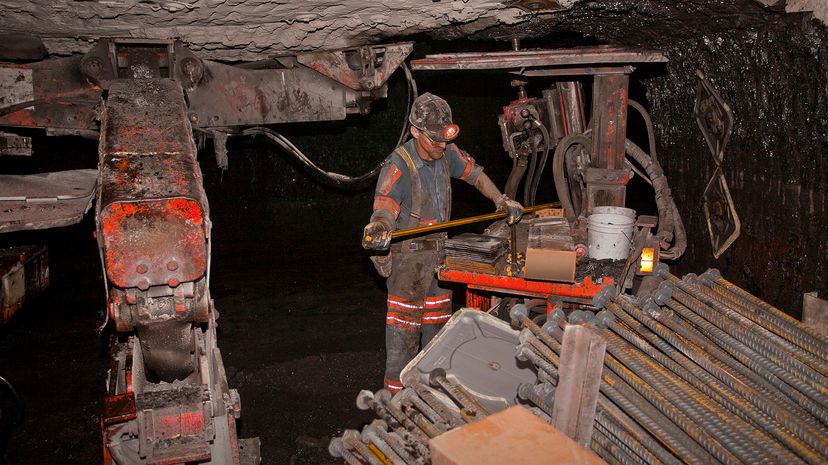Although government organizations like the Occupational Safety and Health Administration (OSHA) have gone to great lengths to improve workplace safety and minimize the fatality rate of dangerous jobs, accidents still happen. The following dangerous job titles are prone to the highest level of fatal work injuries in America.
10. Miscellaneous Agricultural Workers
Agricultural workers have logged a fatality rate of 20 per 100,000 workers in the last year.
Many of these incidents come from outdated farm machinery with moving mechanisms without proper safety guards and kill switches. Many also suffer fatal injuries from older buildings that have fallen into disrepair.
9. Underground Mining Machine Operators
There have always been dangerous aspects to mining operations, but with modern advances in heavy equipment, today's miners must deal with many more hazards than occasional cave-ins.
Operating heavy machinery underground can produce toxic fumes, and maneuvering around dark cramped spaces can lead to several struck-by accidents if workers do not have proper safety guidelines in place.
8. Structural Iron and Steel Workers
Construction job sites for commercial buildings are loud and busy environments with lots of moving pieces. Although extensive planning goes into coordination, structural iron and steel workers tasked with installing iron/steel reinforcement are some of the most vulnerable to fatal occupational injuries because they face danger on the ground, as well as hundreds of stories above.
7. Refuse and Recyclable Material Collectors
Garbage truck drivers and recyclable material collectors may seem out of place in the most dangerous jobs list, but they show higher rates of fatal work injuries than many types of construction workers. Many of these fatal injuries come from transportation incidents as they navigate busy traffic.
6. Truck Drivers
Most workplace fatalities for long-haul truck drivers are due to motor vehicle accidents. A major cause of transportation incidents in the field was once caused by unsafe practices of drivers going for long stints without sleep, but many companies now impose a daily driving limit to mitigate this risk.
5. Aircraft Pilots and Flight Engineers
The Bureau of Labor Statistics ranks aircraft pilots and flight engineers as one of the most likely professions to incur fatal injuries from transportation incidents.
These labor statistics make sense when you couple the speed that aircraft travel with the many quality control issues that Boeing and other aircraft manufacturers are now facing.
4. General Construction Workers
Construction workers wear many hats, and the industry they work in is a wide spectrum with special risks and challenges. Highway workers must plan for transportation incidents, electrical power line installers must mitigate electrocution risk, and general construction workers must face the many hazards of busy construction sites for large structures.
3. Commercial Fishing and Hunting Workers
The Bureau of Labor Statistics always ranks fishing and hunting workers high in fatal injuries because they work in forests, oceans and other isolated areas where it is nearly impossible for emergency services to provide assistance in life-threatening situations.
2. Roofers
Roofers' fatal injury rate is constantly high among construction workers because they work in dangerous conditions at extreme heights.
Roofers must use heavy equipment to lift materials to their workspace, and unclean or disorganized can lead to slips, trips and falls, which make up the majority of this field's fatal work injuries.
1. Logging Workers
Logging workers harvest forests for raw materials. Due to the nature of the work and the extreme need for building materials in the current climate, these workers are pushed to their limits.
Their fast pace, reliance on chainsaws and heavy machinery, and the terrain they make their living in make loggers the most dangerous profession in the U.S., reporting the most workplace deaths per 100,000 workers.
